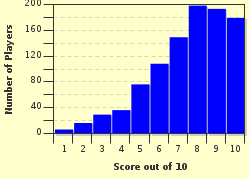Quiz Answer Key and Fun Facts
1. Where better to begin our walkabout than at Australia's most recognised natural icon. What is the Aboriginal name of the big, red rock in the middle of Australia?
2. No stone will be left unturned in our search for Aussie landmarks, so follow me west my little piroshki. To the Aborigines this site is known as the Kata Tjuta (meaning many heads), but it is most commonly known by the name white explorers gave it. Where am I leading you?
3. All work and no play makes Leith a dullard, so let's have some fun. We'll head north to another rock pile just south of Tennant Creek. The Aborigines know it as Karlu Karlu (or Karlwe Karlwe), but the white explorers called it something else. Where the devil are we now?
4. We're off to Queensland's Sunshine Coast now for a bit of sea air. While we're there, I want to show you some mountains. Captain Cook thought they were pretty special, so don't you go throwing any stones now.
5. Following the coastline south, we eventually arrive in Sydney at the site sometimes referred to as the foundation place of Australia. They say it's better to build on rock than on shifting sands, so where are we?
6. Just a stone's throw away is Bondi beach. Stop looking at all the bikini-clad nymphs and come with me to Ben Buckler on the Northern Headland. I want you to see a huge, roughly cube shaped rock. Can you guess what the locals have called this rock since 1960?
7. We need to travel across Bass Strait to Tasmania now so don't rock the boat. Just in case you think there's been a dearth of rocks so far, we are going to the Tasman Peninsula. At Eaglehawk Neck we will get a bird's eye view of five remarkable landforms. What is a landform we probably will NOT see?
8. Back on mainland Australia now and travelling along Victoria's Great Ocean Road. I'm having a biblical moment as I gaze in awe at our next landmark. What am I worshiping?
9. Just to prove that not everything that glitters is gold, and that good things come in small packages, I'm looking for some Australian Opals. The gemstones, not the female basketball players. So where better to go than the self-proclaimed "Opal Capital of the World"? Tell me, do you know where we are going?
10. Hang ten while we sally forth to Hyden in Western Australia to visit the last rock on our itinerary. It is fitting that this is our final stop as we say goodbye to this quiz. What is our final destination?
Source: Author
leith90
This quiz was reviewed by FunTrivia editor
ozzz2002 before going online.
Any errors found in FunTrivia content are routinely corrected through our feedback system.

